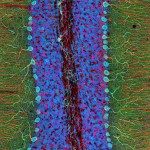Link to Pubmed [PMID] – 12036319
Virology 2002 Apr;296(1):77-83
The major group of human immunodeficiency viruses (HIV-1) that comprise the current global pandemic have diversified during their worldwide spread and may be divided into at least 10 distinct subtypes or clades, A through J. Subtype B predominates in North America and Europe, subtype E predominates in Southeast Asia, and subtype C predominates in sub-Saharan Africa. Functional distinctions in long terminal repeat (LTR) architecture among HIV subtypes have been identified, thus raising the possibility that regulatory divergence among the subtypes of HIV-1 has occurred. In addition to the transcriptional specificity of the HIV-1 LTR, productive HIV-1 replication is also dependent upon the viral Tat protein. Therefore, we sought to investigate whether interactions between host signaling pathways and the NF-kappaB regions of different HIV-1 subtypes, together with subtype-specific interactions between Tat, TAR, and cellular proteins, modulate the efficiency of HIV-1 clade-specific gene transcription. We demonstrate that the NF-kappaB sites of subtypes B and E both bind NF-kappaB-related complexes. However, the duplicated kappaB sites of the C subtype do not compete for NF-kappaB binding. Also, clade E Tat protein possesses the highest transactivation capacity, regardless of the LTR context. Furthermore, preliminary evidence suggests that the acetylation of subtype-specific Tat proteins may correlate with their transactivation efficiency.

